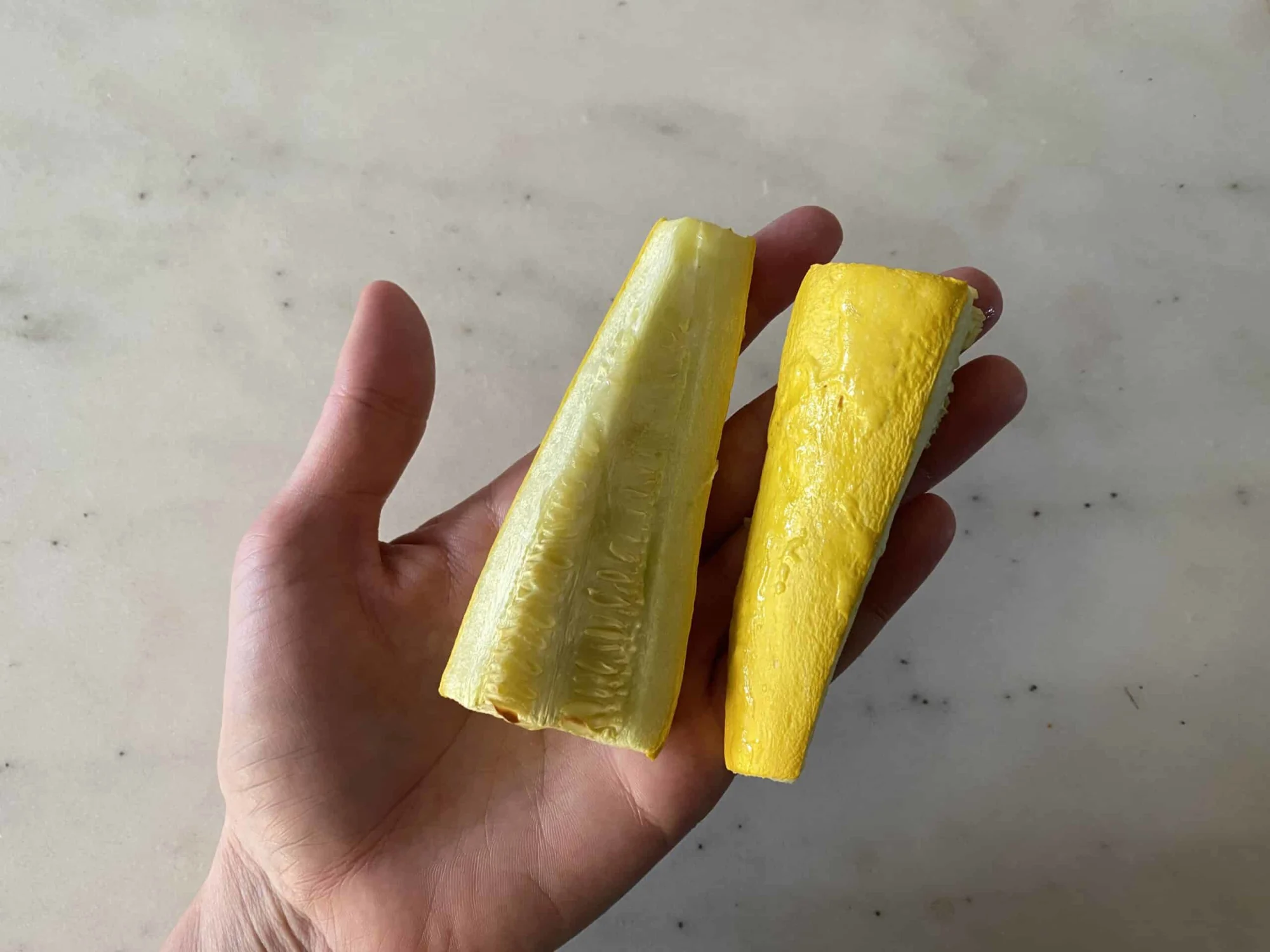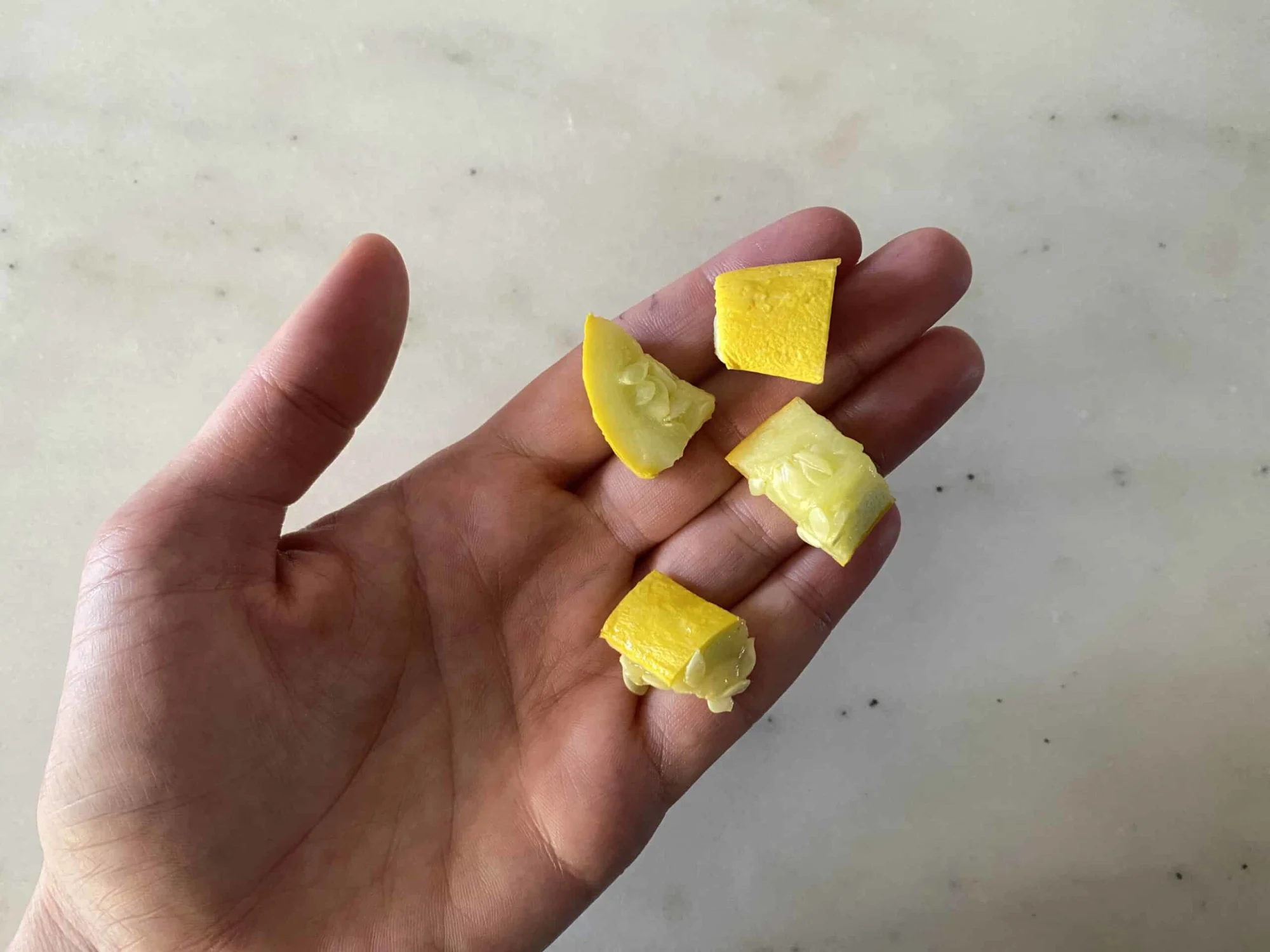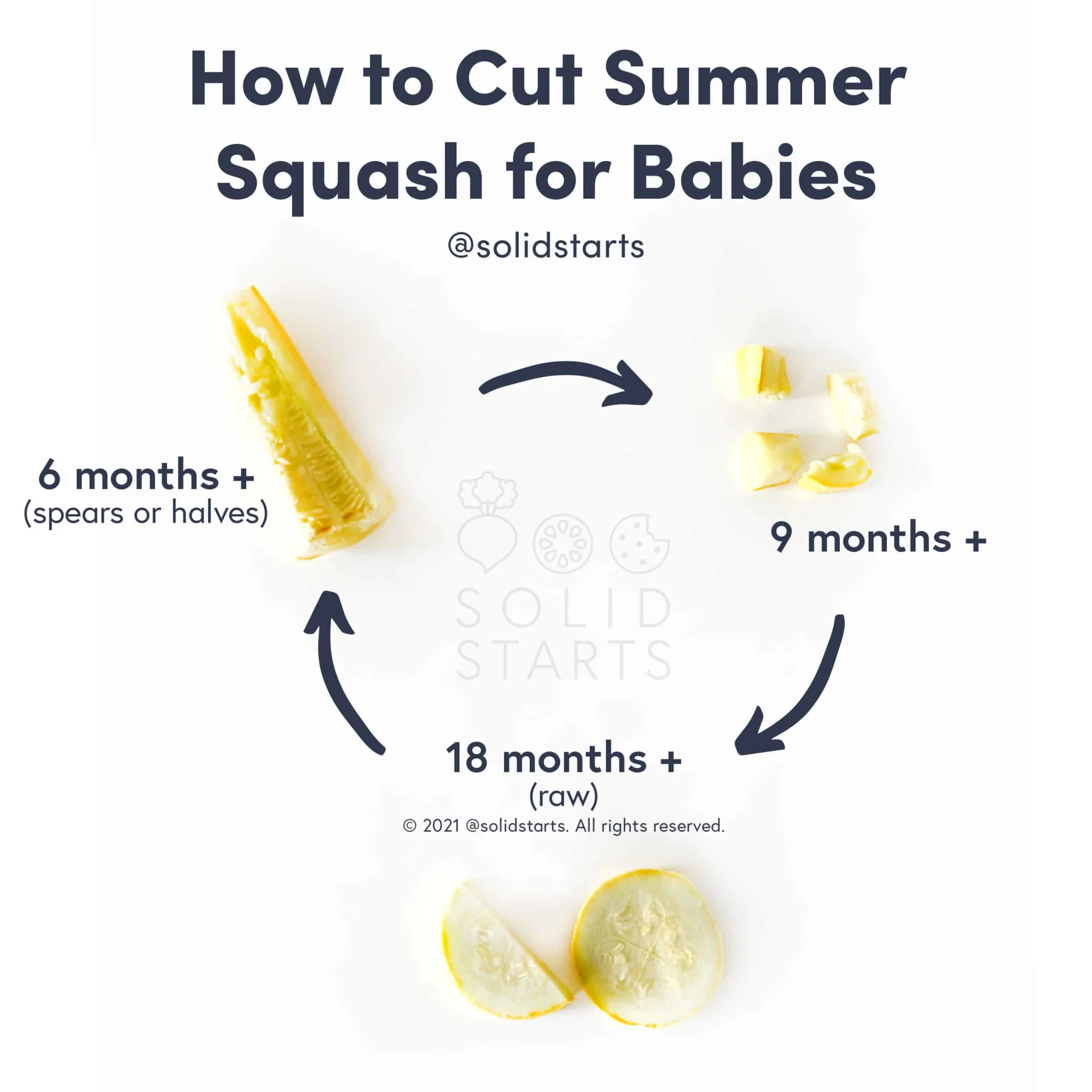Access our First Foods® Database in the Solid Starts App.
Learn moreSummer Squash
Vegetable
Age Suggestion
6 months
Iron-Rich
No
Common Allergen
No

When can babies eat summer squash?
Summer squash may be introduced as soon as baby is ready to start solids, which is generally around 6 months of age.
How do you prepare summer squash for babies with baby-led weaning?
Every baby develops on their own timeline, and the suggestions on how to cut or prepare particular foods are generalizations for a broad audience.
6 to 9 months old:
Serve cooked summer squash cut into spears, which tend to be easy for baby to grab. Cooked summer squash can be slippery, and if baby can’t hold onto the spears, try rolling them in ground-up nut, ground-up pumpkin seed, or shredded coconut to add grip. Alternatively, you can mix cooked or raw shredded summer squash into bean patties, egg strips, meatballs, pancakes, or tamales. Either way, there is no need to peel summer squash. You can also keep the seeds in cooked summer squash, as they are very soft and do not pose a choking risk.
9 to 12 months old:
At this stage, babies develop the pincer grasp (where the thumb and forefinger meet), which enables them to pick up smaller pieces of food. When you see signs of this development, try moving down in size and offer cooked summer squash cut into bite-sized pieces. Try not to fret when you see baby trying to shovel food into the mouth: it is normal at this age, and it is a good learning experience for the child. Serving multiple pieces of food offers baby the opportunity to learn how much food they should put in their mouth. That said, if you prefer, you can shred the summer squash to minimize the risk of choking. You can also serve “zoodles”—noodles made by cutting squash into long strands.
12 to 24 months old:
While shredded summer squash is delicious in breads and muffins, keep offering squash in ways that do not hide the vegetable so that the child builds familiarity with the whole food, too. Continue serving bite-sized pieces and explore recipes with savory flavors from citrus juice, herbs, spices, and sauces. Encourage the child to self-feed by scooping with their hands, and if you’d like to encourage utensil use, pre-load an age-appropriate utensil and rest it next to the food for the child to pick up. Try not to apply too much pressure—consistent and accurate utensil use will come in due time, probably between 18 and 24 months of age. You can also consider offering raw summer squash at this age, cut into thin half-moons or matchsticks if you feel confident in your child’s biting and tearing skills. Around 18 months, most babies that have been consistently practicing biting and tearing likely have the skills to manage thicker slices of raw squash (like rounds and half-moons).


Whether for home or for daycare, get ideas from our guide, 75 Lunches for Babies & Toddlers.
Videos
Is summer squash a common choking hazard for babies?
No. Summer squash is not a common choking hazard, although large cubes or chunks of raw squash could pose a risk, as they can be slippery and somewhat hard to chew. That said, in theory an individual can choke on any food. To minimize the risk, offer cooked summer squash and cut into age-appropriate sizes. Worried about the skin? Contrary to popular belief, the skins of vegetables and fruits are not common choking hazards, though most babies will spit them out until they get skilled at grinding with their molars. The skin may cause some harmless gagging if it sticks to the baby’s tongue. As always, be sure to create a safe eating environment and stay near baby during mealtimes. For more information, visit our section on gagging and choking and familiarize yourself with common choking hazards.
Is summer squash a common allergen?
No. While information on summer squash allergies is limited, a few cases of allergies to zucchini, a close relative of summer squash, have been reported. Those with allergies to zucchini may experience a similar reaction when eating summer squash. Individuals with allergies to ragweed pollen and/or grasses may experience symptoms of Oral Allergy Syndrome (also called pollen-food allergy syndrome) after consuming raw or lightly cooked summer squash or zucchini. Oral Allergy Syndrome typically results in short-lived itching, tingling, or burning in the mouth and is unlikely to result in a dangerous reaction. Peeling and cooking the squash can reduce the risk of reaction.
As you would when introducing any new food, start by offering a small quantity for the first few servings. If there is no adverse reaction, gradually increase the quantity over future meals.
Is summer squash healthy for babies?
Yes. Summer squash contains a wide variety of nutrients, including carotenoids called lutein and zeaxanthin, which support healthy vision. Additionally, it is a good source of vitamin C, which helps us absorb iron from plant-based foods, and beta-carotene, which converts to vitamin A, an antioxidant that supports vision and immunity. Lastly, summer squash contains a dash of fiber, B vitamins, and choline. Squash skin contains more nutrients than the inner flesh, so wash—but don’t peel—summer squash before serving.
★Tip: Store summer squash loosely wrapped in the refrigerator to extend the shelf life. Unlike thick-skinned winter squash, summer squash does not keep for longer periods once they are harvested. Be sure to handle summer squash gently, as any nicks or scrapes on its skin speed up decay.
Can summer squash help baby poop?
Yes. There is plenty of water in summer squash, as well as small amounts of fiber, which aids baby’s digestive regularity. Babies under 12 months typically consume ample fluids from breast milk or formula, but as babies start eating more solids, plant foods high in water content – like summer squash – can help continue to hydrate baby’s body and promote regular pooping.
Where does summer squash come from?
Summer squash are gourds harvested early while the skin is thin, the seeds are soft, and the flesh is tender. They come in different colors—yellow, green, white, striped, and more—and in different shapes, some round and compact, others curved or oblong. The sprawling squash family has roots in Central America, where humans have grown them for food, medicine, and ceremonial purposes for at least 10,000 years. Over time, cultivation has resulted in the summer squash that are widely available today, like the ubiquitous crookneck and straightneck summer squashes, as well as the calabacita, chayote, and zucchini.
What are recipe ideas for cooking with summer squash?
Cooking summer squash in healthy fats increases the body’s ability to absorb some of its nutrients. To this end, try summer squash simply cooked in olive oil and seasoned with citrus and herbs. For a heartier meal, mix summer squash with ground meat, onions, and potatoes to make picadillo, or go vegetarian with calabacitas, a medley of corn, peppers, and tomatoes that tastes delicious on its own or stuffed into tortillas. Summer squash also works well in curries, soups, and stews. But if you want to keep it simple, you can’t go wrong with baked summer squash spears—a quick and easy side for any meal.
Our Team
Written by
Expert Tips Delivered to Your Inbox
Sign up for weekly tips, recipes and more!
Copyright © 2025 • Solid Starts Inc






